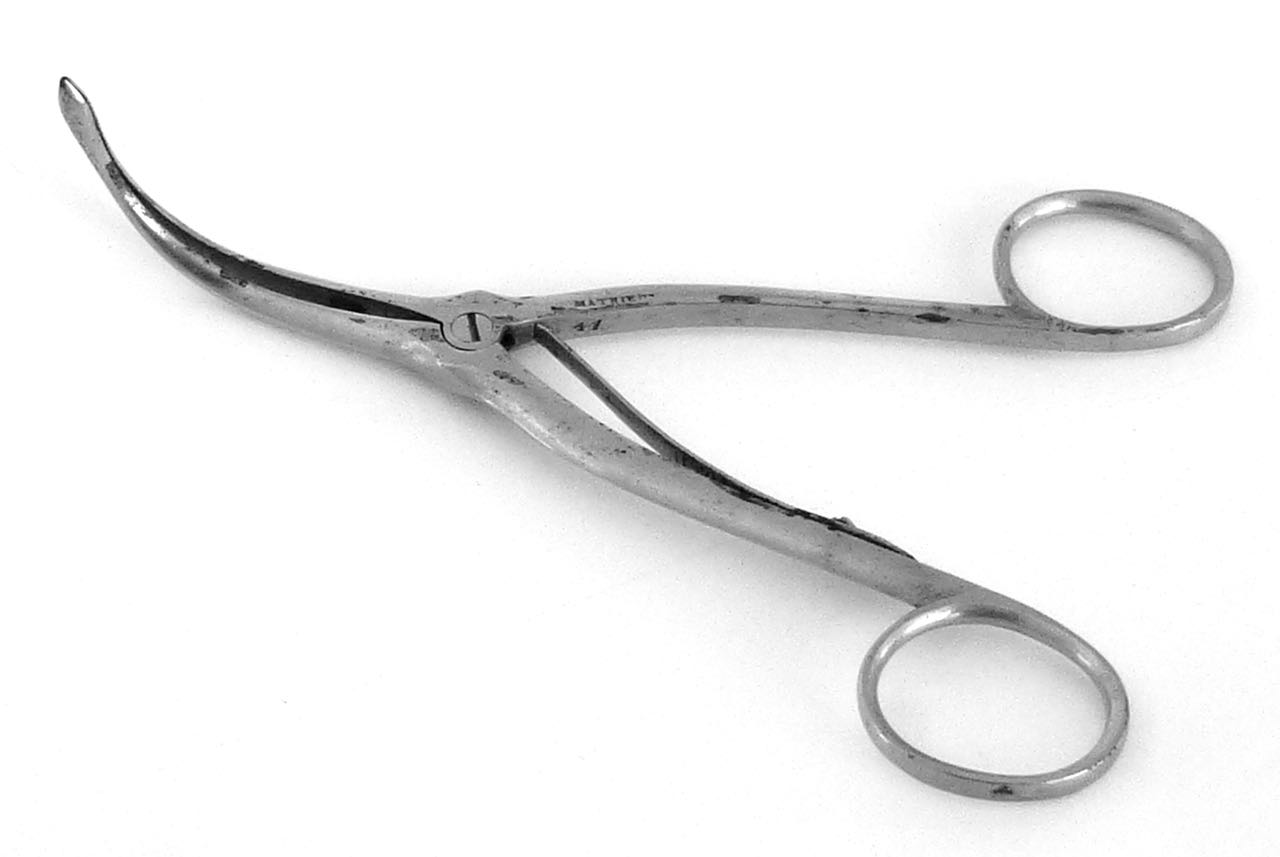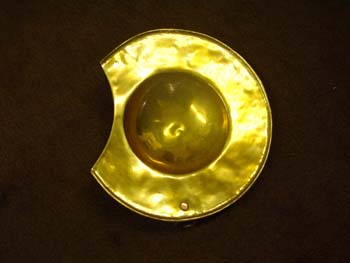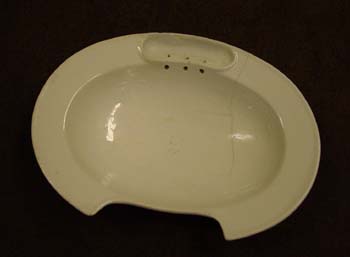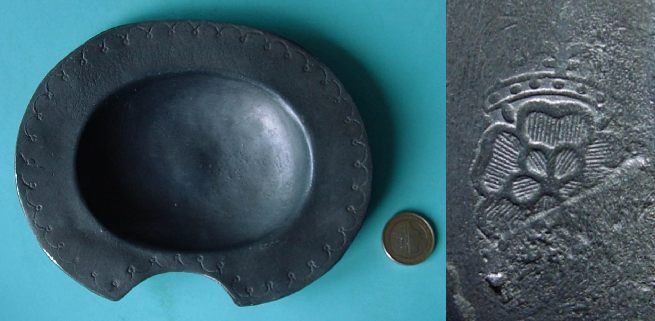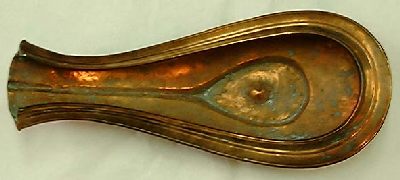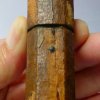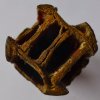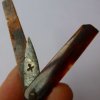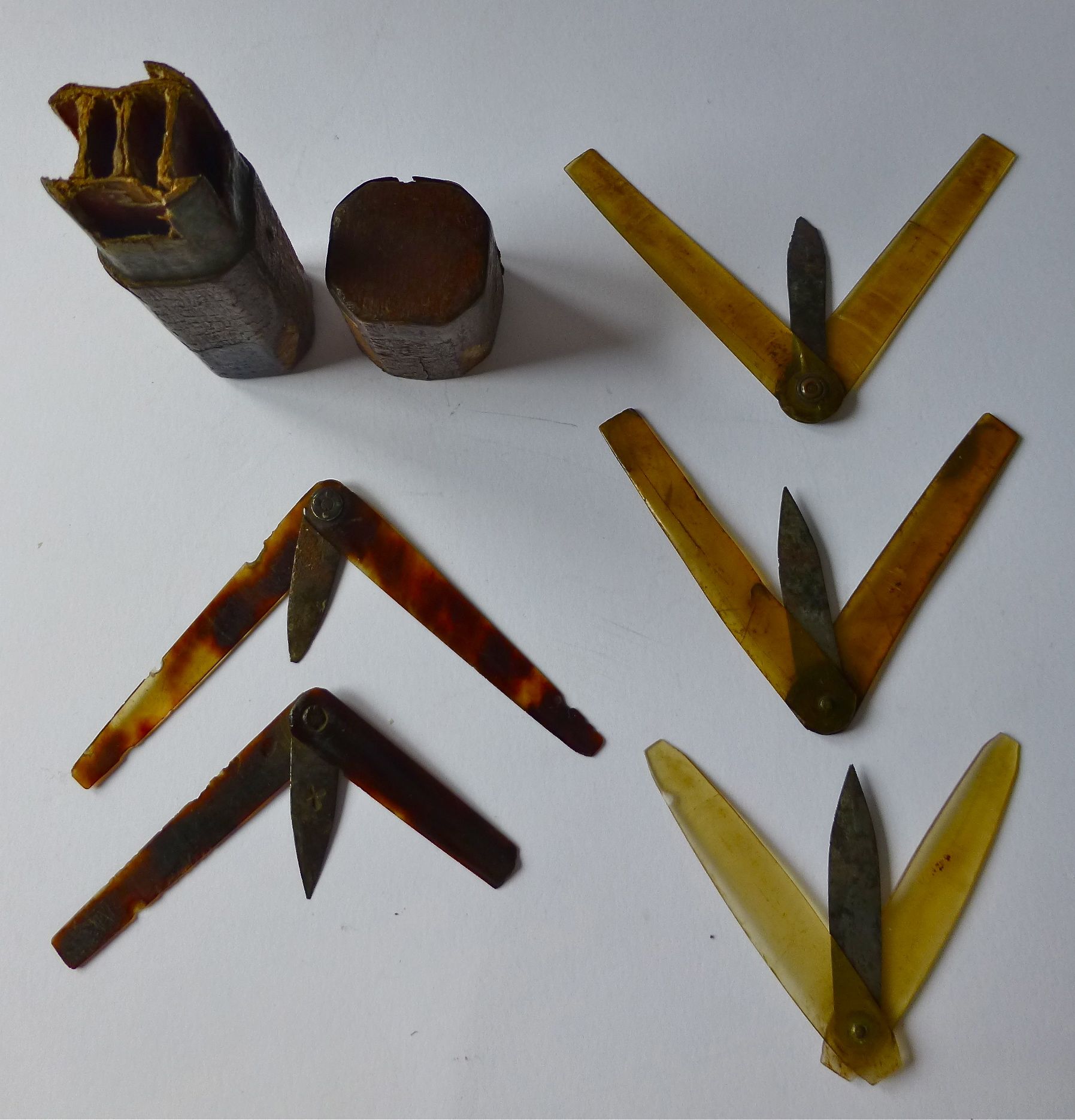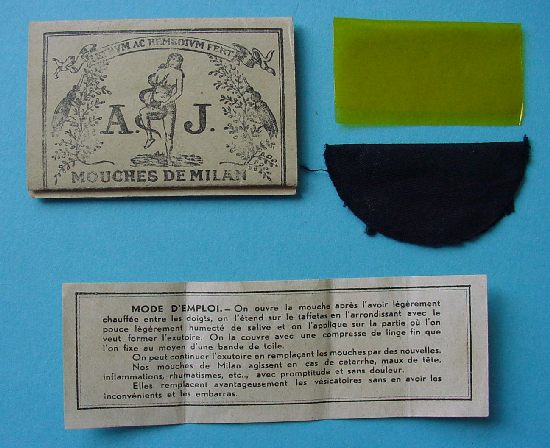Surgery |
||
Artery forceps (1) by MATHIEU |
||
The "valet à patin" "... les premières pinces hémostatiques en usage jusqu'il y a une soixantaine d 'années," valet à patin ", décrit par JJ PERRET était composé de deux branches semblables unies à charnière et munies d'un ressort qui tenait l'instrument toujours fermé; l'intérieur des branches était dentelé et les dents s'ajustaient les unes dans les autres. Cet instrument servait "à tenir un vaisseau pendant qu'on faisait la ligature d'un autre. C'est, d 'PERRET, l'instrument auxiliaire dans l'amputation ", On ne peut exiger désignation plus claire ni plus démonstrative, Cet instrument, primitif et grossier, réalisait à peu de chose près ce que nous obtenons aujourd'hui des Pinces hémostatiques les plus perfectionnées The service of the service and its continuity and the fairness of the ligatures The valet à patin de JJ PERRET and the hémostatique à pression continue Le puissant qui sépare les deux branches et l ' articulation de ces dernières par simple juxtaposition, sans entrecroisement, se trouvent disposés de manière à tenir l'instrument toujours fermé "(Doyen, Eugène Louis, traité de thérapeutique chirurgicale et de technique opératoire) Tome premier: technique chirurgicale générale, Paris: A. Maloine, 1908 p.134).
|
Surgery |
||
Bleeding Bowl Cup (1) |
||
How much to take out?
|
Surgery |
||
Bleeding bowl cup (2) |
||
For comparison, we want to show a bowl made in the Netherlands at the turn of the century, which in turn can be clearly identified as a shaving bowl with the side shelf for the shaving brush (stamped: Société Céramique Maestricht, Made in Holland) |
Surgery |
||
Bleeding bowl cup (3) |
||
Small bowl (14.5x11 cm) with floral pattern on the edge. On the right in the picture the tin stamp on the back: the English Tudor rose.
|
Surgery |
||
Bleeding cup bowl (4) |
||
Until the Renaissance, it was believed that health was based on the balance of four bodily fluids: blood, mucus, yellow and black bile - a system Hippocrates had already adopted in 400 BC. had developed. To heal someone meant to rebalance their juices. For this harmful juices had to be derived. For this purpose, the vessel system was emptied by means of cupping and bloodletting; the intestine was emptied by means of enema and vomiting, the entire body drained by sweating.
|
Surgery |
||
Bleeding lancet (1) |
||
About the lancets
|
Surgery |
||
Bleeding lancet (2) |
||
High blood pressure (recognizable by the warm, moist skin and the reddened face), stroke, gout - there was a whole series z.T. very useful indications for bloodletting.
|
Surgery |
||
Bleeding lancet (3) |
||
Surgeons used to buy their instruments from knife manufacturers, French "coutelliers". So I think it is completely normal for them to rummage through their wife's sewing-box every now and then, in search of a particularly fine instrument.
|
Surgery |
||
Bleeding lancet (3) |
||
Fliet after the Latin "flebotomum" is the Aderlass-Messer with which the Bader performed the bloodletting from the Middle Ages to the 20th century.
Exhibit The presented lancet has two different sized blades, sunk in a case of horn [note the bites by clothes moth (Tineola bisselliella). No manufacturer information.
Doubt arises with such objects, whether human or veterinary. That's it, probably occasionally for humans, but mostly for animals ...
|
Surgery |
||
Bleeding lancet (5) |
||
For comparison, we show here a 4-leaf, veterinary fleat with 2 bleeding knives (right) and two irons for the care of claws in cattle and pigs. It is much bigger and roughly worked. |
Surgery |
||
Bleeding lancet, hammer |
||
To bring the lancet into the rough skin of pets, it took brute force. Prockeln caused the animal useless pain. Thus, an animal lover invented the "hammer" ("bloodstick" or "fleamstick") with which the blade with a short blow in the skin and the underlying vein was propelled "beaten".
Exhibit The 31 cm long hammer shown here was bought in 2004 on a flea market in Ceillac in the French Alps.
Links |
Surgery |
||
Bleeding, white (1) |
||
In addition to bloodless and bloody bloodletting, in which blood is "displaced", deriving methods include "white cupping" with cantharvic plasters. Accumulations of "unhealthy body fluids" from the inside of the body are locally conducted to the surface and disposed of there. In this method, therefore, light SERUM is removed, hence the term "white bloodletting".
|




